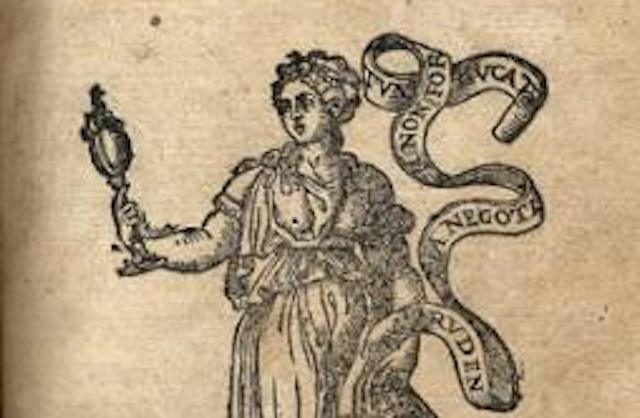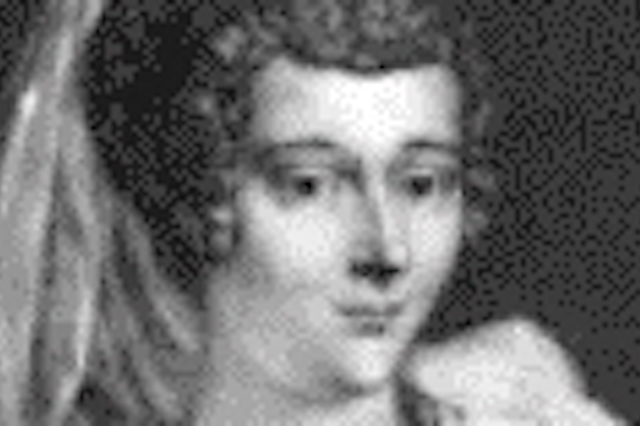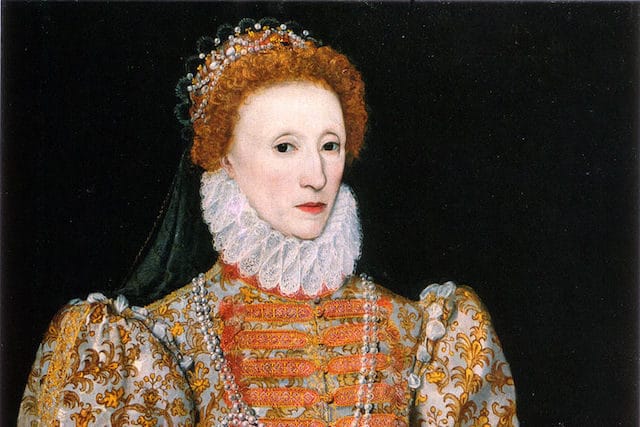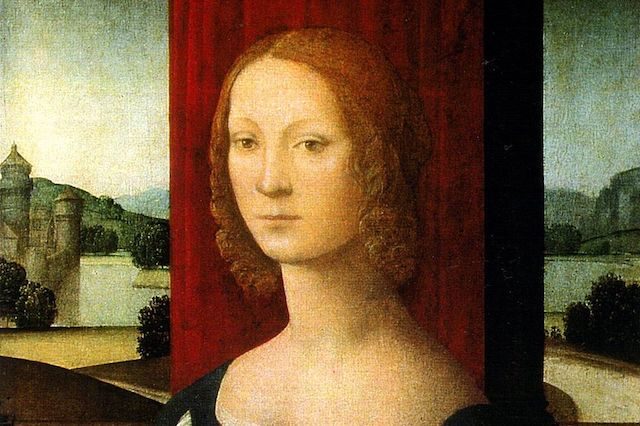Alchemy is the ancient science of attempting to transform lead into gold. Alchemists also sought to create the Philosopher’s Stone, which would guarantee eternal life. While none of these people have been proven to have been successful, their efforts in chemical research gave birth to modern chemistry. The names associated with alchemy in history are typically men; most notably, Nicolas Flamel (yes, Harry Potter fans, that dude was real).
However, many women were far ahead of their time, and were well accomplished scientists and alchemists in their own right. Many of the discoveries made by these female alchemists changed the course of history, even if their due credit has long been forgotten.
10. Hypatia
In ancient Alexandria, Egypt, a woman named Hypatia was the earliest female scientist known in recorded history. She studied and taught astronomy, mathematics, and philosophy. She was also distilling water. In modern times, this may seem simple enough, but at the time, it was considered alchemy. Alchemists believed that distilling, or boiling, released the spirit or essence of a substance to make it more pure. We now know that this is actually true, since boiling water kills bacteria, making it clean to drink.
Hypatia was beautiful, elegant, and well spoken. Many men wanted to marry her, including Orestes, who was the governor of Alexandria. Hypatia was an atheist and a pagan, and Orestes was a Christian. She claimed that she did not believe in the institution of marriage, but they remained close friends, and were possibly lovers. A zealous Christian man named Cyril began to rule over Alexandria, and he expelled all of the Jews from the city. Orestes tried to warn Hypatia, begging her to convert to Christianity to avoid persecution. She refused.
In 415 AD, Christian followers of Cyril formed an angry mob and ripped Hypatia from her carriage. They tore her clothes off, and beat her naked body until she died. Then, they ripped her limbs off of her corpse, and burned the body until there was nothing left. Orestes was devastated, and rushed to Cyril’s throne, demanding justice for Hypatia. Cyril did nothing, and it is likely that he is the one who ordered the men to kill her in the first place. Years later, the Catholic Church canonized Cyril as a Saint.
9. Christina of Sweden

In the later 17th Century, Christina of Sweden was the daughter of King Gustav II Adolph. She was an only child, so when her father died, she became Queen at only 6-years-old. Her father insisted that she would receive the same education as a Prince. When she grew up, she was very open to new intellectual ideas, and wanted Stockholm to be more like Rome, so she converted to Catholicism and lived there for some time.
She had a lot of masculine features, and crossdressed as a man. She refused to get married, and she was rumored to be a lesbian. In documents kept by the Vatican in Rome, she was called a “hermaphrodite,” or in modern terms, intersexed – which means that she was born with both male and female genitals.
Two alchemists named Johannes Bureus and Johannes Franck approached her, and explained the quest for the Philosopher’s Stone. Franck was convinced that Christina was actually part of a prophecy made by Paracelsus, a German alchemist who claimed that some day, the “Elias Artista” would be born, who would help reform the intellectual world. Hermaphrodites were considered to be extremely important by some alchemists. They were seen as being chosen ones who had the power to find the Philosopher’s Stone.
Christina decided to listen to Franck, and set up her own alchemical laboratory. She also collected as many rare ancient alchemy texts as she could. After years of hard work, Christina announced that she succeeded in a transmutation of creating gold, but since she was a woman, most people did not believe her claims.
8. Sophie Brahe
Tycho Brahe became a famous astronomer in the 1500s-1600s, but his sister Sophie is typically forgotten for her own scientific merit. When she was 17-years-old, Sophie began working as an assistant for Tycho, who was 27 at the time. In 1573, she helped her brother record a Lunar Eclipse. He had theorized the timing of it for years, and his findings went down in history. Aside from learning astronomy from Tycho, Sophie studied classic literature, mathematics, medicine, and alchemy.
When she was 19-years-old, Sophie got married and had a son named Tage. Sadly, her husband died when she was 32. Since her child was a teenager when she became a widow, she could devote all of her free time to horticulture and alchemy. She also managed her late husband’s family estate all on her own, making sure it remained profitable as her son’s inheritance. Today, her former home is now known as Trolleholm Castle.
7. Isabella Cortese

Secrets were in fashion during the 16th Century in Italy, and writers marketed their books as divulging recipes and secrets that only a privileged few got to know. Alchemy was a popular subject, of course, since the end result promised wealth and eternal life. For the true alchemists who devoted their life to science, they called these hobbyists “alchemisti ignoranti,” or “ignorant alchemists.”
Typical “secret” books for women were usually filled with beauty tricks, and tips on how to raise children. In 1561, Isabella Cortese published a book called The Secrets of Signora Isabella Cortese. In this book, she explains the journey of her lifelong pursuit to find the Philosopher’s Stone by traveling around Europe and studying ancient texts. In this book, she shares practical alchemical recipes, like how to make perfume, essential oils, distilled water, and melting metals for jewelry. The book became a huge success. She has gone down in history as being the first female alchemist (or scientist) to publish a book.
6. Marie le Jars de Gournay

As a girl in the 1500s, Marie le Jars de Gournay was born to an aristocratic family, but she was not allowed to receive the same education as her brothers. She secretly taught herself Latin, and eventually edited academic manuscripts. As an adult, she became known as the first female mineralogist and mining engineer. She eventually moved to Paris, where she ran into some financial trouble. This motivated her to attempt alchemy, in hopes of creating gold. She eventually published some of the very first feminist books, explaining how women are equally capable of learning science as men are.
At the time, many people still believed in magical underground creatures like gnomes and kobolds, and would warn her to look out for them when digging for minerals. As a woman of science, she was very vocal to shoot down anyone who believed in such things. Ironically, she was later accused of practicing witchcraft, and was imprisoned. She died in jail when she was 80-years-old.
5. Elizabeth I

During the time of Shakespeare, English people were enthralled with poetic stories of fantasy. However, their ruler, Queen Elizabeth I, was more focused on expanding her empire. One of the ladies of Elizabeth’s court, Mary Herbert, practiced alchemy in a laboratory along with a large group of male researchers. Queen Elizabeth wanted to get involved, but she was too busy to study the chemistry and conduct experiments herself, so she had her own personal alchemist named Cornelius de Lannoy. If Cornelius ever succeeded in finding the Philosopher’s Stone, she would get to benefit from his findings.
This was all going on during the Protestant Reformation. Since she was a Virgin Queen, many people looked up to her almost like a goddess, making comparisons to the Virgin Mary. The alchemists in her court believed that she was yet another “chosen one” because of this purity; they would be able to transmute lead into gold and purify elements.
Now clearly, Elizabeth is hardly forgotten… but her passion for alchemy certainly is.
4. Miriam the Jewess

According to a story in the Koran, God taught Moses how to make gold, and he passed on the knowledge to his sister, Miriam. Miriam picked up the art of alchemy very quickly. Despite the fact that the siblings could both create unlimited money, they both stayed humble. Miriam married a man named Qarun. She teaches her husband to make gold as well, and he becomes very rich. At the end of this story, Qarun builds a huge palace, and God punishes him for his arrogance.
In the 4th Century, a famous Egyptian alchemist named Zosimos of Panopolis also wrote about Miriam. However, the original story from the Koran took place 500 year earlier from when he lived. It’s not clear where he got his information, but he claims that she was the teacher of many great alchemists, and called her one of “The Sages.” Zosimos gives her credit for inventing the double broiler, which is essential for melting metal. She has also been credited for discovering hydrochloric acid. Other versions of this story call her “Maria” or “Mary”, but the events of her scientific accomplishments always remain the same.
If these stories are true, then Miriam had an incredible impact on modern science. Other scholars theorize that perhaps Miriam was fictional, and that the story was meant to be a symbol of the group of female alchemists who fermented beer in ancient Egypt. They began a booming industry of brewing beer that would have likely made their husbands rich as well, and has lasted even to this day.
3. Cleopatra the Alchemist

According to ancient records, a physician and alchemist named Cleopatra (not to be confused with the famous Egyptian Queen) was one of the students of Miriam the Jewess. She improved upon Miriam’s double broiling idea, and invented something called the alembic, which was used for distilling liquid. She was also apparently very interested in the science behind reproduction.
Alchemists believed in the idea of “homunculus.” This was a creature made from human bodily fluids mixed with dirt or clay. Some of the basis behind this idea was the misunderstanding that sperm contained the “homunculi,” which was a fully formed human being, only very tiny. Some alchemists believed that homunculi simply needed a woman’s womb to grow, and that men were fully capable of creating human life without women’s help. Many male alchemists believed that if they succeeded in creating a homonculi, it would have special powers, because it would not be “polluted” by females. Obviously, as a female alchemist, reproduction was an issue that Cleopatra was interested in studying, and she felt as though maybe this whole homunculus theory was flawed. Of course, she was correct, and had a scientific mind that was way ahead of her time.
2. Caterina Sforza

In a manuscript called “Experiments” written in the 1400s, an alchemist named Caterina Sforza wrote that she discovered something called talc water, which would make a 60-year-old woman look like she was 20. She also claimed that this same water would turn silver into gold, and cure the plague.
During her lifetime, she spent most of her time practicing alchemy, and wrote her findings in the manuscript. She wasn’t trying to get her work published, but she personally wanted to figure out the secrets to health, youth, and financial success. She would hang out at the local apothecary, asking questions and learned as much as she could about pharmacology. Her main interest was in making anti-aging potions, as well as medicines that could cure illness. She also wanted to become rich, of course, and passed on the results of her experiments to her son, who practiced alchemy as well. Caterina’s grandchildren began the famous House of Medici, which possessed tremendous power in banking and politics.
1. Marie Meurdrac

Marie Meurdrac was born into a French noble family during the reign of Louis XVI. While other members of the French nobility partied endlessly with drugs, sex, and alcohol at Versailles, Marie was more interested in studying the science of alchemy. Rather than getting away with scandals, all Marie asked of the king was to build a laboratory containing a furnace that could heat up hotter than the legal limit.
She focused on three basic substances: salt, sulphur, and mercury. She did experiments on animals, and would also create products that were meant to enhance her beauty. She was very humble in her writings, explaining that she only felt comfortable publishing the experiments which she had tested multiple times, and had full confidence that the results were true. She also goes on explain that she held on to her finished manuscript for two years, because men always treated her like she was stupid, and that women should not boast when they have knowledge.
She finally found the courage to submit her book for publication when she realized that men and women are the same, and that “the mind has no sex.” After she became known as an expert in alchemy, she began to hand out free medicine to the poor. She wrote a second book called Useful and Easy Chemistry for the Benefit of Ladies.